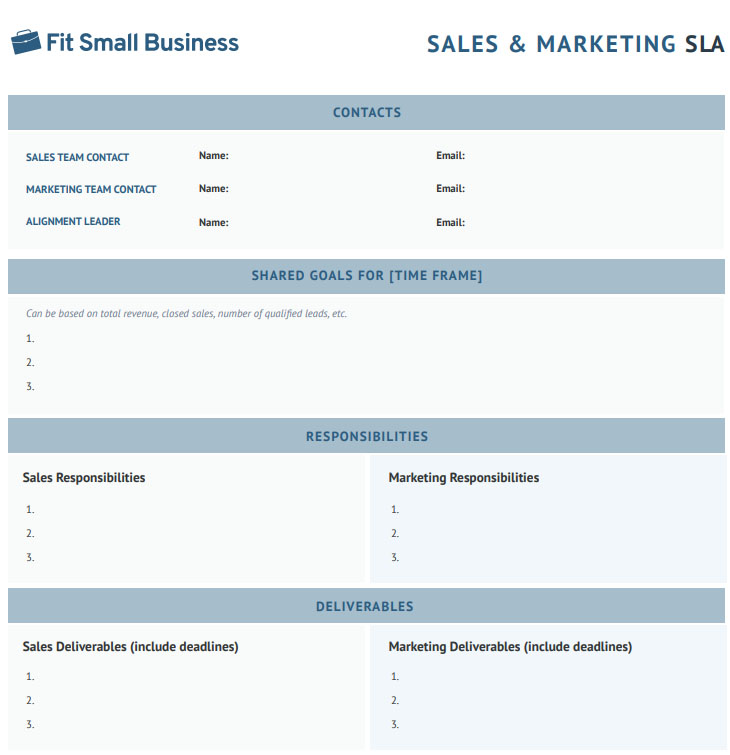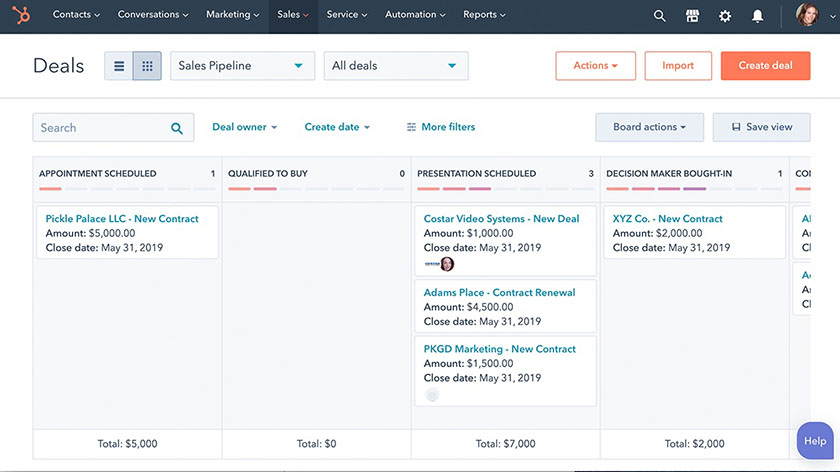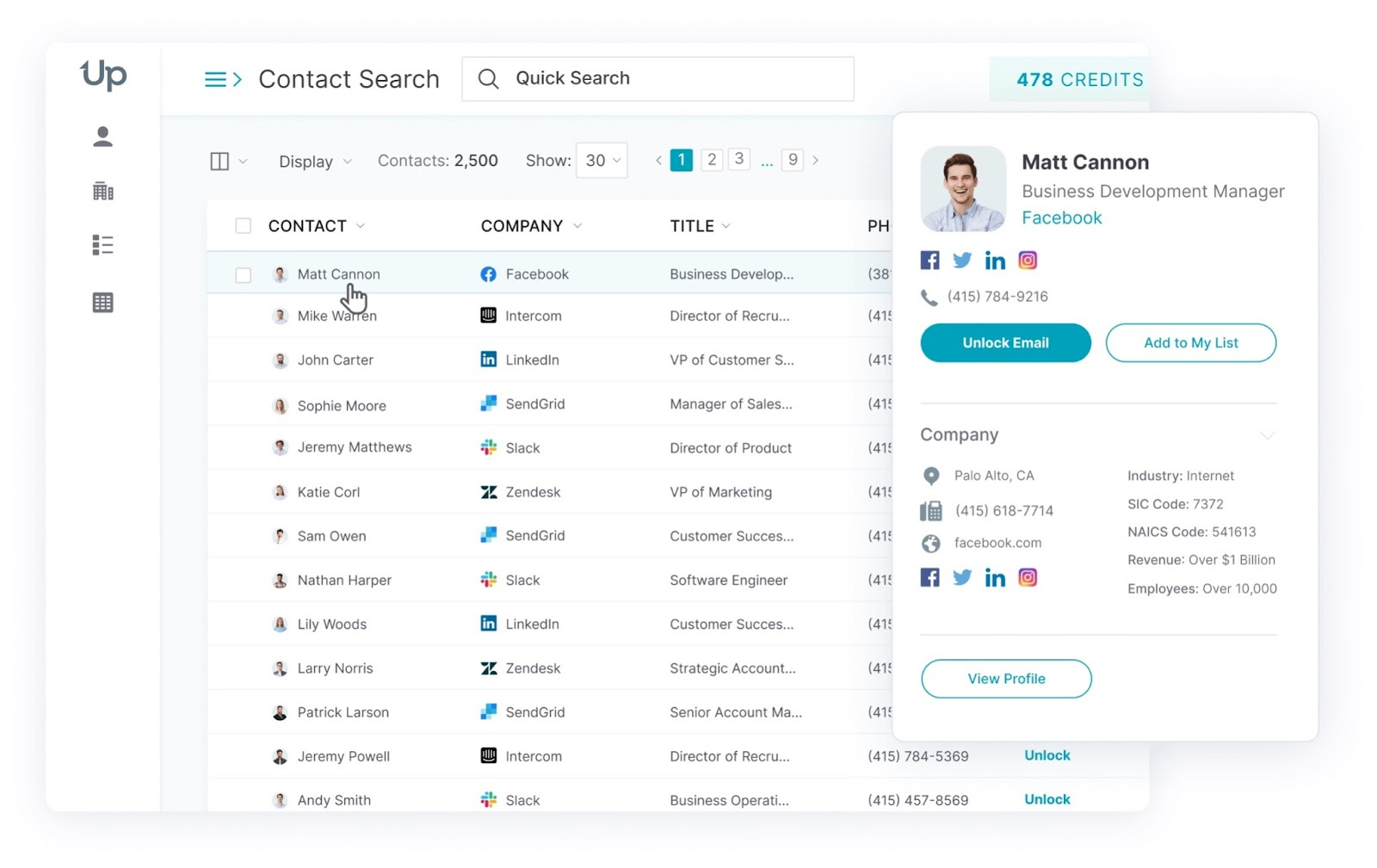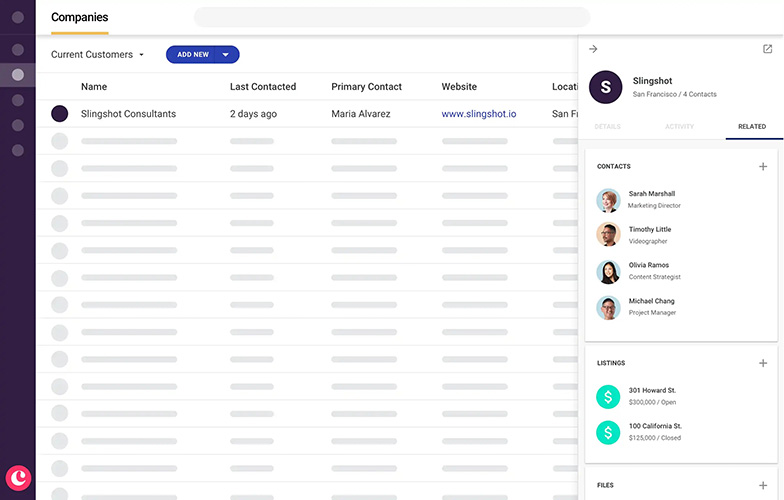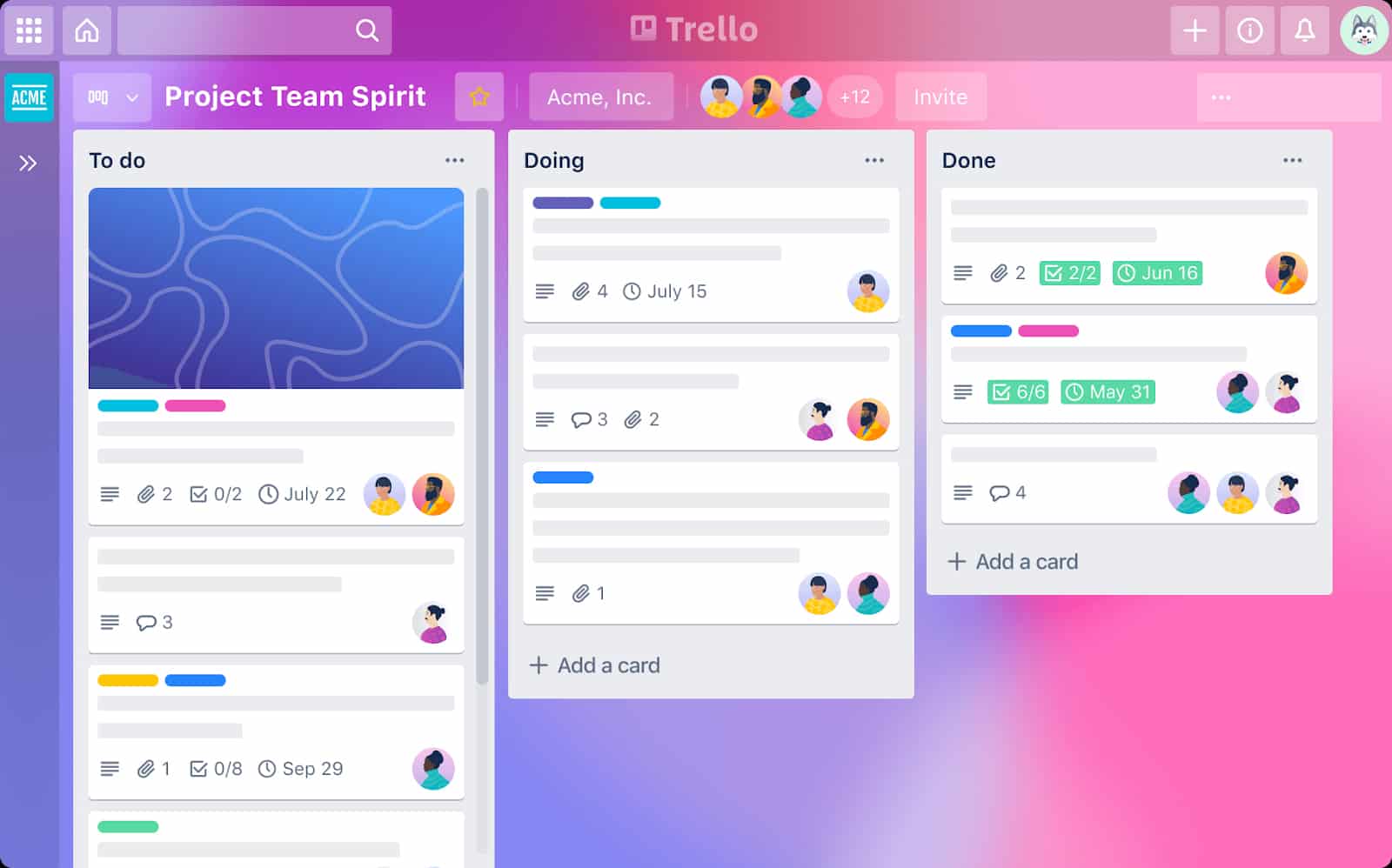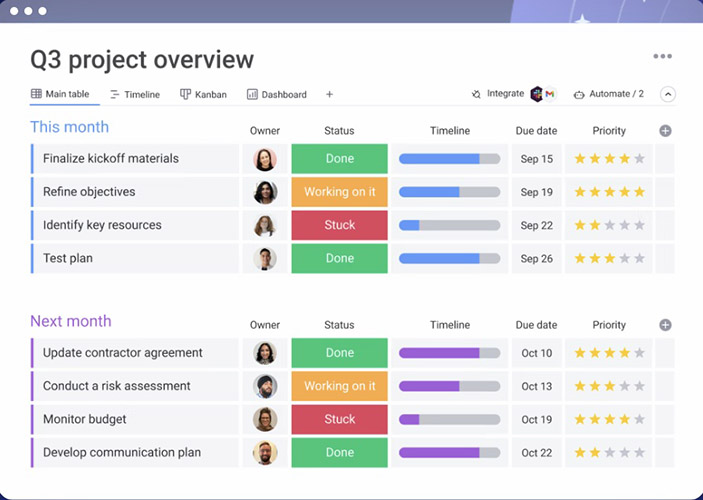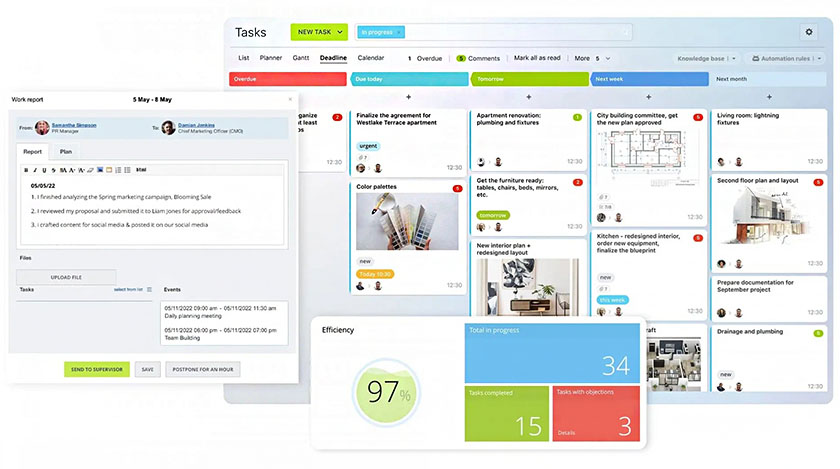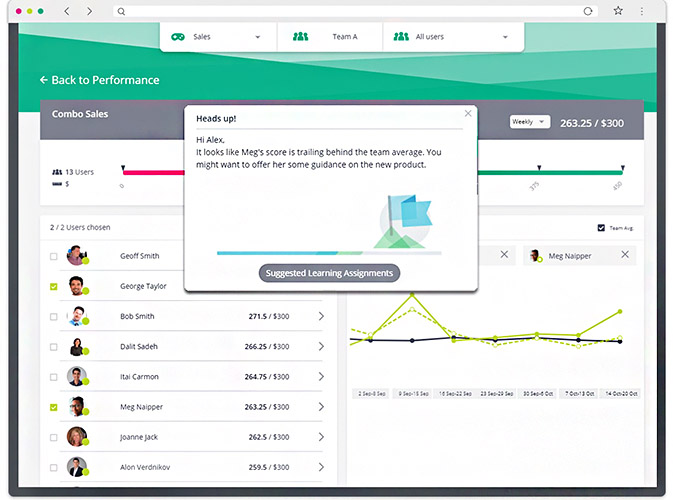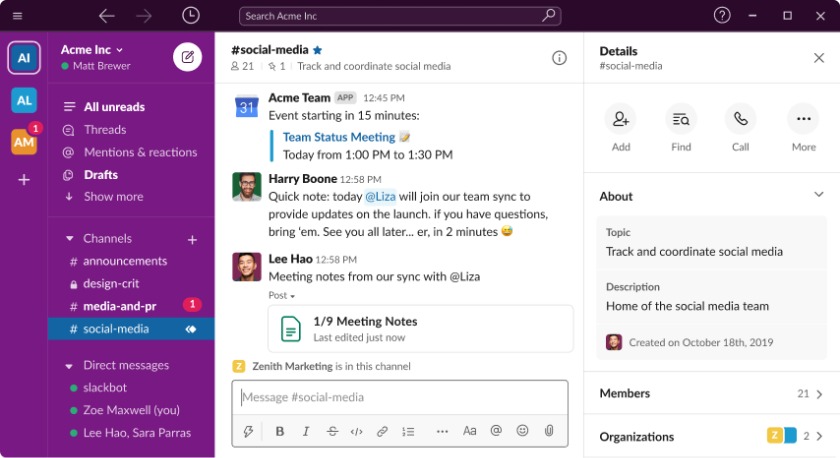While sales and marketing typically operate in separate silos, bringing them together through strategic sales and marketing alignment is one of the quickest ways to boost sales and improve customer retention. In this article, we provide a step-by-step guide that explains how to align sales and marketing by developing a plan to foster growth, creating shared goals and service level agreements (SLAs), and using collaborative software to accelerate your small business growth.
What Is Sales and Marketing Alignment?
Every company—whether you’re in the business of real estate or custom T-shirts—operates on sales. To close sales, marketing teams operate what is known as a marketing funnel, which begins with creating awareness and ends with the customer’s decision. Sales has its own process: a pipeline that starts with prospect research and culminates in closing the deal. Sales and marketing alignment bridges the gap between the marketing funnel and sales pipeline, as illustrated by our Alignment Cycle.
1. Develop an Organizational Structure That Promotes Collaboration & Communication
In your small business, you may not have a staff large enough to merit senior sales and marketing managers who can lead their respective teams while also working together to ensure sales and marketing collaboration. Your company may even have a one-person sales or marketing team.
In that case, the most important step in aligning sales and marketing is ensuring buy-in from the CEO, owner, or another top leader to whom both sales and marketing team members report to. That top-down buy-in will foster the necessary communication between the two teams, making alignment even easier.
Additionally, cross-functional training can help facilitate marketing and sales alignment by creating a mutual understanding of the connections between the two departments, focusing on how sales and marketing work together to achieve revenue goals.
Pro tip: HubSpot offers many free courses in both sales training and marketing. To get started with cross-functional training, we recommend their Inbound Sales Course for marketers and their Inbound Marketing Optimization Course for salespeople.
2. Establish Shared Goals
A sales team may have a goal of generating 300 new leads via outbound methods, while marketing has its own goal of generating 300 new leads via inbound methods. But when learning how to align sales and marketing, the collective goal of increasing sales should be driven by a shared goal to generate 300 new leads together.
Pro tip: Outbound leads are generated by sending communications to potential customers, including by making cold calls, sending cold emails, and sending direct mail. On the other hand, inbound leads are generated by attracting and pulling in potential customers through content marketing, social media marketing, and similar methods.
This seemingly small difference is quite significant, as it reinforces the need to collaborate through every step of the process, including lead generation. Though sales and marketing teams use different methods, each strategy should be informed by the other team. The sales team’s outbound strategies should incorporate the marketing team’s content. Likewise, the marketing team’s inbound strategies should incorporate the sales team’s in-depth product knowledge and experience with leads at the later stages of the sales process.
3. Create a Service Level Agreement
Shared sales goals are an essential part of sales and marketing collaboration, but they can create confusion and redundancy if the execution of these goals isn’t properly planned. This is where service level agreements (SLAs) come in.
While often serving as a contract between service providers and customers, SLAs can also be used internally to align sales and marketing strategies. In this function, SLAs outline the expectations and responsibilities of each team, including deliverables and timelines.
They also define key metrics, like email open rates and social media engagement numbers, so there is no misunderstanding about overall improvements or regression. Finally, the SLA improves accountability among all team members, as it should be frequently consulted, particularly during sales and marketing meetings.
Imagine a company needs to close 150 sales in the next quarter. An SLA between the sales and marketing team details the terms that make a lead qualified (e.g., the lead opens 75% of emails, has participated in a free webinar, and has expressed interest in an introductory call).
It stipulates the marketing team will deliver 100 qualified leads to the sales team by the end of each month, assuming a 50% conversion rate. Finally, it requires the sales team to provide a detailed report 30 days after receiving said leads, explaining how many sales were closed and any hiccups in the process.
4. Communicate Often
Another key to successful sales and marketing alignment is frequent and intentional communication, including across teams. Here are some examples of information that could be shared both in and outside of meetings to improve the customer experience as well as the likelihood of closing a sale:
- The sales team shares some of the questions and concerns voiced by prospects during the sales pitch, so the marketing team creates content for sales to use that specifically addresses those issues.
- The marketing team shares which content resonates most with prospects during the awareness phase. The sales team begins to use some of those same materials when introducing products and services while avoiding the content and language that doesn’t land well, as reported by the marketing team.
- To complete the alignment cycle, the sales team shares information about which prospects choose not to buy, which prospects close, and why. Together with the marketing team, they use that data to refine the customer persona in the prospect research phase before beginning the cycle again.
- The marketing team shares that many prospects with the same buyer persona appear engaged at the beginning of the alignment cycle but are all dropping out around the same time, for a similar reason. The sales team then creates new product offerings more targeted to buyer interest, increasing the likelihood of conversion.
5. Invest in Tools to Make Aligning Sales & Marketing Easier
Certain types of sales software streamline the processes of gathering prospect data, converting them into regular customers, and rewarding team victories. This makes these software products key components of sales and marketing alignment best practices.
How Do I Know if My Efforts to Align Sales & Marketing Are Working?
To accurately measure your business’ effectiveness in aligning sales and marketing, it’s best to turn to the numbers. Below are some of the key metrics you can track. Keep in mind, you need to gather baseline data from your pre-aligned processes to fully assess the impact on your business.
- Overall return on investment for an advertising campaign
- Cost per lead for content marketing projects
- Conversion rates of leads from one stage of the sales process to another
- Average time to pass a lead to the next stage
- Deal winning/closing rate for every lead generated
The purpose of understanding various percentages, averages, and totals is to see where you should focus your resources and where there might be functional gaps in the alignment. For example, let’s say you are running these four sales and marketing campaigns simultaneously:
- Cold calling 100 leads purchased for $300 from a lead generation company
- Sending email introductions to 50 leads purchased for $150 from a lead generation company
- A video webinar advertised on LinkedIn with a call to action (CTA) to submit a web form; webinar and advertising costs totaled $1,700 and produced 5,000 views
- A Google Ads campaign that will generate leads by having them download an industry report created by your business; the industry report and cost of advertising totaled $3,000 and produced 10,000 views
Now, imagine the cold calling campaign generated nine leads, the email introductions generated four leads, the video webinar generated 50 leads, and the online ad generated 200 leads. Based on this information, the following performance metrics were calculated as:
- Cold calling: 9% lead generation rate and $33 cost per lead
- Email introduction: 8% lead generation rate with a per-lead cost of $37
- Video webinar: 1% lead generation rate and $100 cost per lead
- Online ad: 2% lead generation rate with a per-lead cost of $15
After assessing these performance metrics, you would likely have your sales team focus on cold calling over email, as it yielded a better conversion rate and lower cost per lead. To align the sales and marketing teams, communicate about any shifts in buyer persona that would require another set of leads. Additionally, the marketing team should review the cold calling scripts to ensure they include the same language and information being used in marketing campaigns and materials.
Pro tip: For a detailed guide to cold calling, check out our article on how to write cold calling scripts, which includes free templates you can download and customize.
Key Benefits of Sales & Marketing Alignment
Learning how to align sales and marketing doesn’t just sound like a noble goal for results-driven businesses. The benefits speak for themselves.
Key Stats on the Impact of Aligning Marketing & Sales
LinkedIn surveyed marketing and sales decision-makers from technology, financial services, and professional services firms. Below are some critical observations from the survey:
- 87% of respondents say sales and marketing alignment drives business growth
- 85% say successful alignment presents the best opportunity to improve business performance
- 90% agree that customer experience improves when sales and marketing are aligned
- 98% of sellers and 97% of marketers believe that the business and the customer are negatively impacted when sales and marketing are not aligned
Frequently Asked Questions
Though sales and marketing are leveraged to drive revenue, collaboration opportunities are often neglected. Aligning the two teams increases the effectiveness and efficiency of all revenue generation steps, including lead prospecting, creating awareness, delivering the sales pitch, and closing the deal.
Put simply, if sales and marketing are not aligned, your business will not be as successful or as profitable as it could be. First, there will be a considerable waste—of both time and money—in the sales process. Second, potential customers who may become frustrated because they’re not being heard will walk away or buy from a competitor.
While many of the tools we mentioned come with a subscription fee, some of the most critical sales and marketing alignment best practices are free. Start with an organizational structure that fosters communication and collaboration. Establish shared goals and clearly defined responsibilities for the sales and marketing teams and work to achieve those goals as a collective unit.
HubSpot offers a few free sales and marketing alignment courses, including a HubSpot Sales Software Certification course. If you’re considering using HubSpot’s CRM to manage your sales process and to facilitate alignment between the sales and marketing teams, this course is a great way to get everyone on the same page quickly.
Bottom Line
Sales and marketing alignment is a key factor in separating high-growth businesses from their less successful counterparts. Following these steps, best practices, and software tools will create alignment between these two critical business functions. As a result, your business will experience a smoother sales process, more effective marketing campaigns, higher revenue, and explosive growth for your business.
